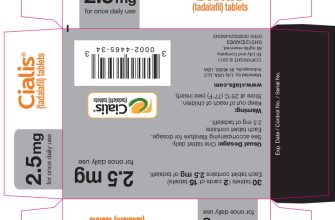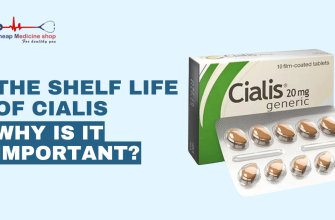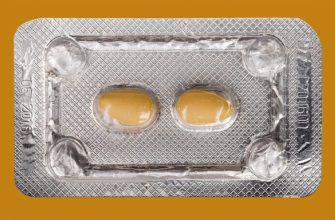Need a concise overview of Cialis? Focus on understanding its intended use: treating erectile dysfunction and benign prostatic hyperplasia (BPH). This monograph provides precise details on dosage, administration, and potential side effects, enabling informed decisions about its use.
Remember, Cialis, as tadalafil, functions by increasing blood flow to the penis, facilitating an erection. Its duration of action extends significantly compared to some other medications, providing up to 36 hours of potential effectiveness. However, individual responses vary, and consistent efficacy is not guaranteed.
Dosage information is critical. Consult your physician for personalized recommendations, as the appropriate dose depends on individual health status and other medications. Common side effects include headache, nasal congestion, and back pain; serious adverse events are rare but require immediate medical attention. This monograph details all potential side effects and interactions, aiding in risk assessment.
Before starting Cialis, discuss potential interactions with other medications, particularly nitrates, with your healthcare provider. This monograph clearly outlines contraindications and precautions to ensure safe use. Always prioritize open communication with your physician for accurate and tailored guidance regarding Cialis use.
Cialis Product Monograph: A Detailed Overview
Consult your physician before using Cialis. This product monograph provides crucial information; however, it’s not a substitute for professional medical advice.
Cialis, containing tadalafil, treats erectile dysfunction and benign prostatic hyperplasia (BPH). It improves blood flow to the penis, enabling firmer erections, and also reduces urinary symptoms associated with BPH.
Dosage varies depending on individual needs and medical history. Typical starting doses range from 5mg to 20mg daily, taken as needed or once daily. Your doctor will determine the appropriate dosage and schedule for you.
Common side effects include headache, flushing, nasal congestion, and muscle aches. These are usually mild and temporary. Serious side effects, while rare, include sudden vision loss or hearing loss. Seek immediate medical attention if these occur.
| Side Effect | Frequency | Action |
|---|---|---|
| Headache | Common | Usually resolves spontaneously; consider over-the-counter pain relief if needed. |
| Flushing | Common | Drink plenty of water. |
| Nasal Congestion | Common | Use saline nasal spray or consult your doctor. |
| Muscle Aches | Common | Rest and light exercise may help. |
| Sudden Vision Loss | Rare | Seek immediate medical attention. |
| Sudden Hearing Loss | Rare | Seek immediate medical attention. |
Cialis interacts with certain medications, particularly nitrates. Combining them can cause a dangerous drop in blood pressure. Always inform your doctor about all medications you are taking, including herbal remedies.
Cialis is not suitable for everyone. Individuals with heart problems, low blood pressure, or certain eye conditions should exercise caution and consult their physician before use. Do not exceed the recommended dosage.
Proper storage is vital. Keep Cialis in its original container, away from moisture and extreme temperatures.
This information is for general knowledge only. Always refer to the complete product monograph and discuss your individual circumstances with your healthcare provider before using Cialis or any medication.
Indications and Usage of Cialis
Cialis treats erectile dysfunction (ED), helping men achieve and maintain an erection sufficient for satisfactory sexual intercourse. It’s prescribed for adult men with ED of various etiologies.
Cialis also manages the symptoms of benign prostatic hyperplasia (BPH), reducing urinary symptoms like frequent urination, weak urine stream, and nighttime urination. This dual action makes it a suitable choice for men experiencing both ED and BPH.
The recommended starting dose for ED is 10 mg, taken as needed, at least 30 minutes before sexual activity. For BPH, the usual dose is 5 mg once daily. Your doctor will determine the appropriate dose based on your individual needs and health status.
Cialis is not suitable for everyone. Men with certain heart conditions, low blood pressure, or those taking specific medications should discuss its use with their doctor before starting treatment. Additionally, it’s vital to inform your doctor about any other health problems or medications you are using.
Remember, Cialis is a prescription medication. Always follow your doctor’s instructions for use and dosage. Never share your medication with others.
Dosage and Administration Guidelines
Cialis is available in 2.5 mg, 5 mg, 10 mg, and 20 mg tablets. The recommended starting dose is 10 mg, taken as needed, at least 30 minutes before sexual activity.
For some men, a lower dose of 2.5 mg or 5 mg may be sufficient. Conversely, those who don’t achieve satisfactory results may find a higher dose of 20 mg beneficial. Your doctor will help determine the best dosage for you, considering your individual health needs and response to treatment.
Take Cialis only as directed by your doctor. Do not exceed the recommended dosage. Cialis should be taken only when sexual activity is anticipated. Daily use should only be considered under your doctor’s guidance.
The effect of Cialis can last up to 36 hours. Do not take more than one tablet in a 24-hour period. Avoid grapefruit or grapefruit juice while taking Cialis, as it can affect how your body processes the medication.
If you experience side effects, contact your doctor immediately. This information is for guidance only and does not replace consultation with your healthcare professional. Always follow your doctor’s instructions.
Contraindications and Warnings
Do not use Cialis if you have a known allergy to tadalafil or any of its ingredients. This includes the inactive ingredients listed in the full prescribing information.
Exercise caution and consult your doctor before using Cialis if you have:
- Heart problems, including recent heart attack or stroke. Cialis may increase the risk of cardiovascular events in susceptible individuals.
- Low blood pressure or high blood pressure that is not well controlled.
- A history of heart failure.
- Unstable angina.
- Severe liver disease. Cialis metabolism may be affected, necessitating dosage adjustments or contraindication.
- Severe kidney disease requiring dialysis.
- Retinitis pigmentosa (a rare eye disease).
- A history of Non-arteritic anterior ischemic optic neuropathy (NAION).
- A condition that could predispose you to priapism (a prolonged and painful erection lasting more than four hours).
Cialis can interact with other medications. Inform your doctor about all medications, including prescription drugs, over-the-counter medications, and herbal supplements, you are currently taking, especially:
- Nitrates (used to treat angina).
- Alpha-blockers (used to treat high blood pressure or prostate problems).
- Specific antifungal medications.
- Certain HIV protease inhibitors.
Avoid grapefruit and grapefruit juice while taking Cialis, as they can increase tadalafil levels in your blood.
If you experience sudden vision loss, stop taking Cialis immediately and contact your doctor. Similarly, seek immediate medical attention if you experience a prolonged erection (priapism).
This information is not exhaustive. Always consult your physician or pharmacist for complete information and guidance before starting or continuing Cialis therapy.
Adverse Reactions and Side Effects
Cialis, like all medications, can cause side effects. The most common are headache, flushing, nasal congestion, and indigestion. These usually are mild and temporary.
More serious, though less frequent, side effects include changes in vision, such as blurred vision or temporary blue-tint vision. If you experience sudden vision loss, stop taking Cialis and seek immediate medical attention. This is a serious potential side effect requiring prompt medical care.
Back pain and muscle aches are also possible. These side effects generally resolve on their own. However, persistent or severe pain warrants contacting your doctor.
Prolonged erection (priapism) is a rare but serious side effect. It requires immediate medical attention to prevent permanent damage. Seek medical help immediately if an erection lasts longer than four hours.
Hearing loss, including sudden deafness, is another potential side effect, although infrequent. Contact your doctor immediately if you experience any hearing changes while taking Cialis.
Allergic reactions, such as rash, itching, or swelling, are possible. Discontinue use and contact your doctor if you have an allergic reaction.
This information is not exhaustive. Consult the full prescribing information or your doctor for a complete list of potential side effects and interactions. Always report any unusual symptoms to your healthcare provider.
Drug Interactions with Cialis
Always inform your doctor about all medications you’re taking, including over-the-counter drugs, vitamins, and herbal supplements, before starting Cialis. Some medications can significantly affect Cialis’s effectiveness or increase the risk of side effects.
Here’s a summary of key interactions:
- Nitrates: Combining Cialis with nitrates (found in some heart medications) can cause a dangerous drop in blood pressure. This combination is strictly contraindicated.
- Alpha-blockers: These medications, often used to treat high blood pressure or enlarged prostate, can increase the risk of low blood pressure when taken with Cialis. Your doctor might adjust your dosage or recommend alternatives.
- CYP3A4 inhibitors: These medications (like ketoconazole and ritonavir) can increase Cialis levels in your blood, potentially intensifying its effects and side effects. Your doctor may need to lower your Cialis dose.
- CYP3A4 inducers: These medications (like rifampin and carbamazepine) can decrease Cialis levels, reducing its effectiveness. Your doctor may need to adjust your dosage accordingly.
- Alcohol: While moderate alcohol consumption usually doesn’t pose a significant problem, excessive alcohol intake can worsen Cialis’s side effects, especially dizziness and headaches.
Specific interactions can vary depending on the individual medication, dosage, and your overall health. It’s crucial to have an open discussion with your physician about all your medications and health conditions to ensure safe and effective use of Cialis.
This information does not substitute professional medical advice. Always consult your healthcare provider before making changes to your medication regimen.
- Disclaimer: This information is for educational purposes only and does not constitute medical advice. Always consult with a healthcare professional before making any decisions related to your health or treatment.
Overdosage and Management
If an overdose is suspected, immediately contact a poison control center or seek medical attention. Symptoms of overdose may include headache, flushing, nasal congestion, visual disturbances, and hearing loss. These are usually mild and transient.
There is no specific antidote for Cialis overdose. Treatment focuses on supportive care. Monitor vital signs and provide symptomatic treatment as needed. Hemodialysis is unlikely to be of benefit because tadalafil is highly protein-bound and extensively metabolized.
For management of adverse effects, consider discontinuing Cialis. If hypotension occurs, supportive measures such as intravenous fluids may be necessary. For severe hypotension, appropriate vasopressor support should be initiated.
Close observation of the patient is recommended following a suspected overdose, especially if other medications are involved. Consult relevant medical guidelines for further assistance in managing potential complications.
Pharmacokinetics and Pharmacodynamics of Tadalafil
Tadalafil absorption is rapid after oral administration, reaching maximum plasma concentrations (Cmax) within 2 hours. Food modestly delays absorption, increasing Cmax and slightly extending time to Cmax. Therefore, tadalafil can be taken with or without food.
Tadalafil is extensively metabolized by the liver, primarily via CYP3A4. A small portion undergoes glucuronidation. The elimination half-life is approximately 17.5 hours. This long half-life allows for once-daily dosing.
Tadalafil’s pharmacodynamic effects stem from its selective inhibition of phosphodiesterase type 5 (PDE5) in the corpus cavernosum. This inhibition increases cGMP levels, leading to smooth muscle relaxation and improved blood flow to the penis, facilitating penile erection.
Steady-state plasma concentrations are achieved within 5 days of daily dosing. The pharmacokinetic profile supports once-daily administration for the treatment of erectile dysfunction and benign prostatic hyperplasia.
Renal impairment reduces tadalafil clearance, leading to increased exposure. Dosage adjustments are recommended for patients with severe renal impairment. Hepatic impairment also impacts clearance; adjustments may be necessary based on the severity of liver disease.
Tadalafil’s interaction with other medications should be carefully considered. Coadministration with strong CYP3A4 inhibitors, such as ketoconazole and ritonavir, significantly increases tadalafil concentrations. Conversely, inducers of CYP3A4, such as rifampicin, may decrease tadalafil concentrations.
Individual patient factors, including age, concomitant medications, and underlying health conditions, influence tadalafil pharmacokinetics and pharmacodynamics. A physician’s assessment is crucial for appropriate dosage selection and monitoring.







